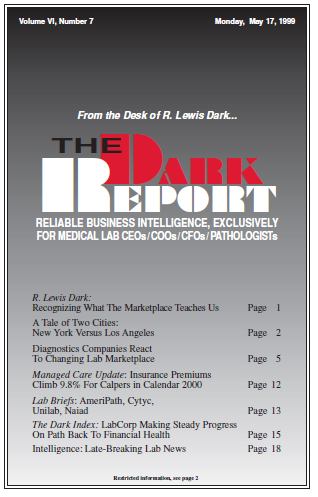MORE VALIDATION that healthcare premiums will trend upwards at near double-digit rates came from California this week. The California Public Employees’ Retirement System (Calpers) announced it will pay average rate increases of 9.7% to HMOs starting in 2000. This is significant because Calpers is considered one of the shrewdest buyers of healthcare in the nation. …
Insurance Premiums Climb 9.7% For Calpers in Calendar 2000 Read More »
To access this post, you must purchase The Dark Report.


